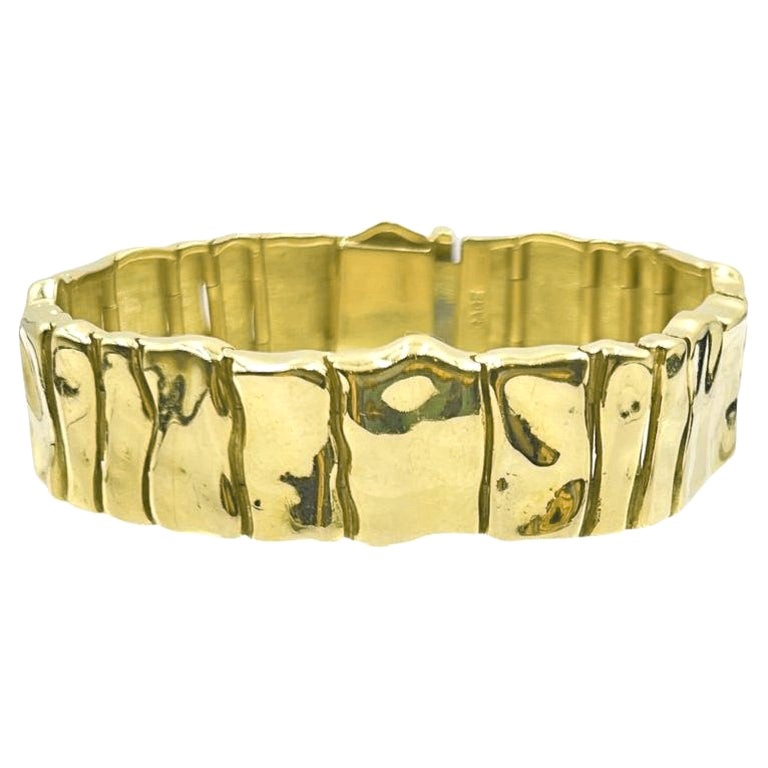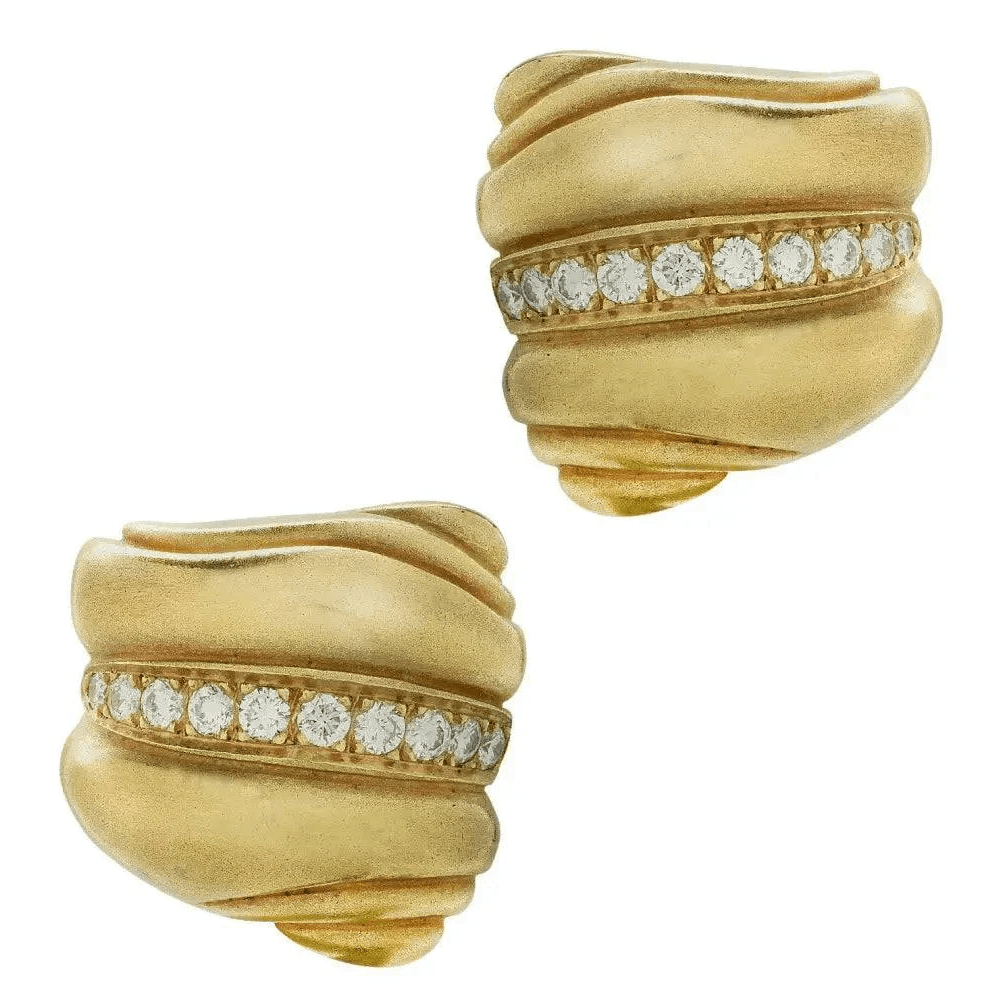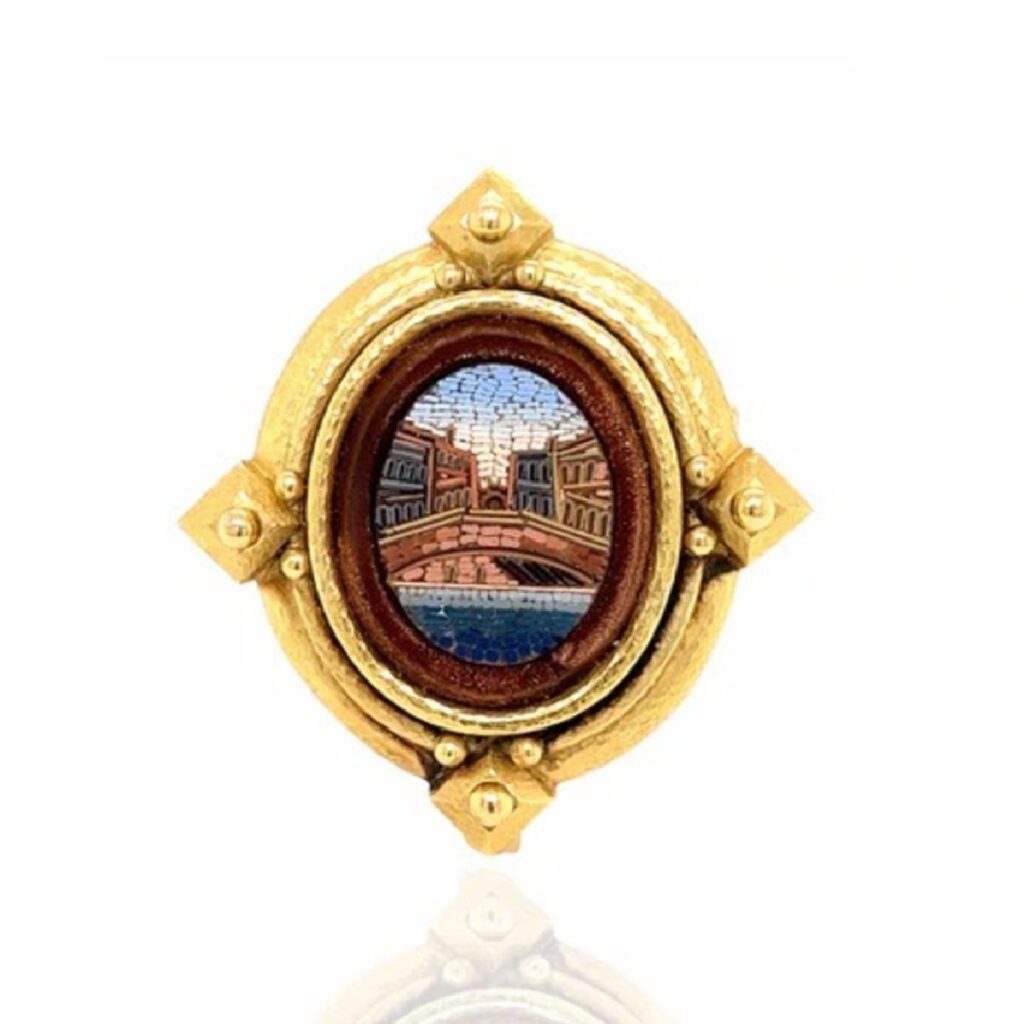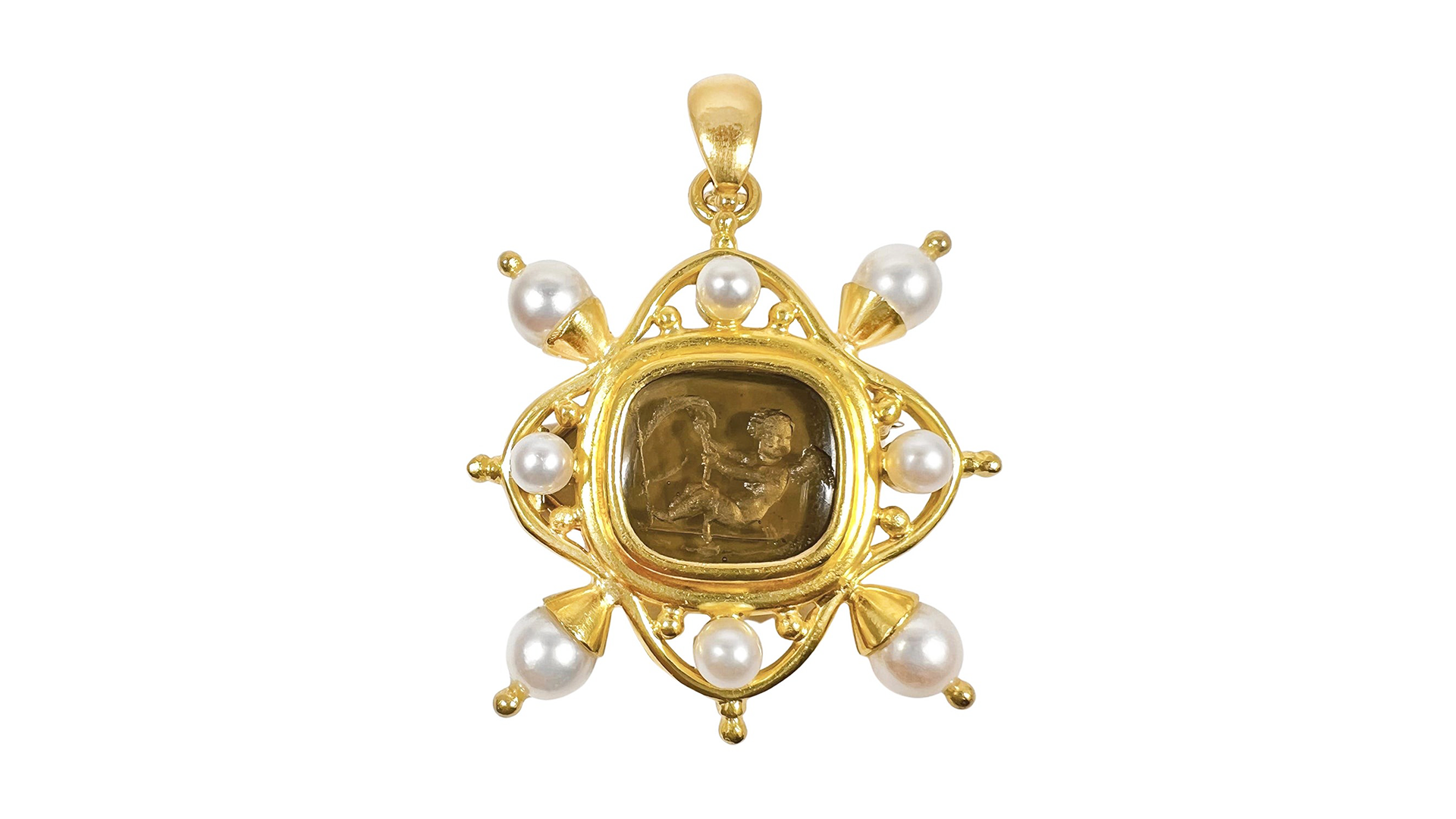Every generation has its star jewelry designers. Historically, we’ve seen firms like Cartier, Van Cleef & Arpels and Tiffany & Co. dominate the conversation, but there are many independent designers who have made a name for themselves in the second half of the 20th century. Each one has brought something new to the jewelry world in terms of aesthetics and innovation. Here’s an introduction to three designers, still living, who are creating jewelry that is treasured today and desired by the jewelry enthusiasts of tomorrow.
Elizabeth Gage

British jewelry designer, Elizabeth Gage, born in 1934, has been crafting jewelry for close to sixty years. Inspired by the cultures of ancient Egypt and Rome, the Renaissance and the Tudor period, as well as architecture and nature, she works almost exclusively in 18- or 22-karat gold. Always creative, Gage is a trained master goldsmith, studying ancient goldsmithing techniques in Crete. She brought that knowledge back to her team of artisans in England, teaching them these age old skills. Gage was studying at the Chelsea School of Art when she had an epiphany that set her on the path to jewelry design. Fed up with studying one day, she took a break and went into another area of the school where she stumbled upon a table displaying Roman era rings. Gage knew then what she wanted to do and she spent the next eight years studying at Sir John Cass College (now known as London Metropolitan University). Her first big break came in 1968 when Cartier New York commissioned her to design a collection for its catalog. In 1969 she opened her eponymous company with a simple mission: Jewelry should be a form of storytelling, historic, handmade and crafted to last. Her jewelry incorporates miniature enamel paintings, custom cut stones and historical elements. Gage has been honored with numerous awards including a De Beers International Diamond Award in 1972 and a Lifetime Achievement Award in 2008 by British publication “Retail Jeweller”. She was also a recipient of the Queens Award for Export Achievement. Her jewelry is on display at the Victoria & Albert Museum in London. Gage continues to design each piece of jewelry herself, specializing in brooches and large rings.
Barry Kieselstein-Cord

Manhattan-based jewelry designer, Barry Kieselstein-Cord, born in 1948 (some sources report his birth year as 1943), got his start working in the advertising world, winning multiple Art Directors Club Awards. Kieselstein-Cord studied at Parsons School of Design, New York University and the American Craft Institute. He began making silver jewelry in 1971, with his first big sale to the owner of Hunting World Stores, providing money for him to buy enough silver to actually make a collection of jewelry. Kieselstein-Cord showed the collection to the buyers at George Jensen, who repped his jewelry in the Madison Avenue store. The jewelry was hugely successful and gained Kieselstein-Cord an international audience. He founded his company named after himself, in New York City in 1972. His jewelry soon found its way on to the Calvin Klein runways and later his work was showcased on the fashions of Perry Ellis, who also let Kieselstein-Cord display jewelry in his showroom. He has a large celebrity following, creating a sterling silver skull pendant for Rolling Stones front man, Mick Jagger for his thirtieth birthday. In 1976, Kieselstein-Cord introduced his silver belt buckles, which garnered much press and many sales. In the late 1970s, he began working with gold and gemstones, he also introduced handbags featuring his designs as clasps. He set up boutiques in Bergdorf Goodman in New York City, Neiman Marcus in Beverly Hills and Mitsukoshi in Tokyo followed by more locations in Italy, Germany and Switzerland. He is the recipient of numerous design awards including The Coty American Fashion Critics Award as well as a Council of Fashion Designers of America Award among others. Kieselstein-Cord’s jewelry has been featured in the movies “The Nanny Diaries” and “The Devil Wears Prada” as well as other feature films. He has pieces showcased in the Louvre in Paris, the Metropolitan Museum of Art in New York City, The Museum of Fine Arts Houston and others.
Elizabeth Locke

A trip to Bangkok inspired jewelry designer Elizabeth Locke to take the plunge and start her own collection. Born in Staunton, Virginia, Locke’s father was an English professor who took the family on trips to Europe where they explored the ruins of ancient cultures. Those trips were her first exposure to 18th and 19th century micro mosaics, which were fascinating to her. Locke went on to earn an English degree from Duke University, before moving to Italy where she earned a degree in Italian literature from the University of Florence. She stayed in Italy for a few years before returning to the United States and working for an Italian business magazine. While there she met Frank Zackary, the editor of Town & Country magazine, who later commissioned her to write an article for the publication about shopping and getting a custom piece of jewelry made in Bangkok. That was the turning point for Locke, who admired the gold work done by the Thai artisans, but she didn’t like the designs. She returned from her trip, enrolled in the Gemological Institute of America and studied gemology. While there she determined that 19-karat gold was the nicest gold color for jewelry, it has remained a signature of her work. Locke later returned to Thailand after borrowing $20,000 from her father-in-law to start a collection, founding her company in 1988. She worked with the artisans in Bangkok, using age old goldsmithing techniques, to create handmade jewelry inspired by the Etruscan, Greek and Roman cultures, often incorporating micro mosaics, 18th century gambling counters and antique Japanese porcelain buttons. Locke has a personal collection of 100 micros mosaics set in hand hammered 19-karat gold, that are in a traveling exhibit that is part of the Virginia Museum of Fine Arts Permanent Collection.
These three living designers are creating work that touches the cultural tempo of the moment, with jewels that are meant to be worn and collected by jewelry enthusiasts today and in the future.
Top of Page: Venetian glass, pearl and 19-karat gold pendant by Elizabeth Locke, courtesy Greenleaf & Crosby by Betteridge (@greenleafandcrosby).
Authored by Amber Michelle
